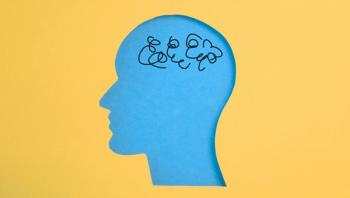
- Vol 40, Issue 2
Bulimia Nervosa: Diagnostic Clarification and Determining Levels of Care
Approximately 30 million individuals will be diagnosed with an eating disorder in the United States during their lifetime.
SPECIAL REPORT: EATING DISORDERS
Over the past decade, continued research and insight into eating disorders (EDs) have furthered our understanding of the prevalence, course, and severity of various ED diagnoses. One literature review puts lifetime ED prevalence at 8.4% for women and 2.2% for men, 12-month prevalence at 2.2% for women and 0.7% for men, and point prevalence at 5.7% for women and 2.2% for men (
Santomauro and colleagues sourced various epidemiological databases to conclude nearly 41.9 million cases of EDs globally may have been improperly diagnosed in 2019.2 Similar studies indicate the elusiveness of accurately identifying/screening ED symptoms, correctly diagnosing, and initiating treatment. These missteps are commonplace, but not for a lack of competence; the matter of ED diagnosis and treatment is historically challenging due to the underreporting and secretive nature that occur within this population. Moreover, although beneficial, the recent increase in media coverage and research aimed at
Prevalence and Diagnostic Clarification
BN diagnoses in general have trended upward over the past decade, contributing to an estimated 6.3 million Americans currently meeting criteria. However, it is known that BN (similar to other EDs) is underdiagnosed in the community. Concurrent with patient underreporting and lack of insight, research indicates that initial screening may be too rigid to accurately identify compensatory strategies, medical complications secondary to EDs, and differences in presentation (child/adolescent/adult). More specifically, studies demonstrate that weight change may prove to be insignificant, which can allow BN to go undiagnosed for longer periods of time when compared with anorexia nervosa, ARFID, and
Identification of BN begins with utilization of active listening and observation of cues that may indicate underlying symptoms (
Levels of Care
Similar to other EDs, BN can be treated either outpatient or inpatient (differing levels of care within each), depending on the severity and duration of the patient’s current presentation. Hospitalization should be considered if any of the items in
Residential treatment is an effective alternative for patients who do not have an immediate medical risk but whose daily engagement in maladaptive ED behaviors does not rule out the possibility of acute medical comorbidities. Moreover, residential treatment is an appropriate option for those who simply do not have the capacity to fulfill day-to-day functions due to the presence of ED behaviors and persistent intrusive thoughts related to compensatory behaviors. Furthermore, this level of care is most appropriate for maintaining structure and supervision of meals, caloric intake, and prevention/reduction of compensatory behaviors. Intensity of comorbid psychiatric diagnoses may also impact the decision to recommend residential care versus outpatient care.12
Generally, outpatient treatment can be categorized into the following: partial hospitalization programming (PHP), intensive outpatient (IOP), and routine outpatient care. PHP is one of the most popular options for patients because of the structure it provides and the flexibility in maintaining personal commitments (ie, work, family care, financial responsibilities). PHP is usually described as a subacute treatment setting and can be utilized as a step-down option for patients who recently completed residential care. Length of stay is determined by the severity of presentation but typically lasts from 4 to 12 weeks, averaging 5 to 8 hours of programming per day. Stable medical presentation, acceptance of support, improved cooperation, and fair motivation are all hallmarks of PHP care. Although most patients continue to struggle with intrusive compensatory thoughts and behaviors, they are able to adequately engage in the treatment process with multiple members of their care team.
IOP treatment traditionally lasts 2 to 5 hours per day (specific to the needs of each patient) up to 5 days a week. This level of care typically is deemed appropriate for patients who are medically stable, display improved motivation, display increased autonomy and confidence, and can reduce compensatory behaviors without the assistance of constant supervision.
Lastly, routine outpatient care is most always recommended following any treatment discussed previously and can be utilized for much longer periods of time. Outpatient care typically includes a mental health professional, medical professional, and dietician/nutritionist. The recent uptrend in
Due to the pervasiveness and intrusiveness of EDs, it is most common to complete care in a stepwise fashion, beginning with higher levels of care and methodically “stepping down” in care after treatment goals have been met. If feasible, care coordination is encouraged to continue through outpatient providers during the patient’s treatment stay. Consistent communication and tracking may prove advantageous for coordination when outpatient treatment is resumed following inpatient, residential, or PHP/IOP treatment.
When the discussion of treatment initiation occurs, it is imperative to provide a sense of validation and support to the patient, as treatment for EDs can elicit feelings of fear or failure, which have been shown to intensify comorbid symptoms. Although we would like each patient to maintain a sense of control over their care options, it is also important to keep in mind other factors such as severity and duration of their presentation, comorbidities (both medical and psychiatric), readiness, and financial responsibility/insurance coverages. These considerations, among others, encompass treatment criteria that can be specific to each institution and insurance company. To reduce arbitrary guidelines, the American Psychiatric Association developed thorough level-of-care guidelines for practitioners.13
Concluding Thoughts
Many patients diagnosed with BN will require some combination of treatment and would benefit from ongoing subacute care with a well-established interdisciplinary team (ie, psychiatric, therapeutic, medical, and dietary professionals). Research demonstrates that prognosis improves greatly when practitioners can diagnose and treat promptly—at the first signs of BN. Longitudinal outcome data indicate 45% to 50% of patients show full recovery from BN, with patients diagnosed during the first 4 years of their symptomatology achieving better results. Moreover, recovery from BN does not typically occur in a linear fashion, with longitudinal studies reporting multiple treatment initiations being commonplace.14,15 Consistent communication and treatment planning can bolster a sense of support and provide a stable foundation to treat BN.
Dr Lee is a licensed clinical psychologist working at a residential eating disorder center. Dr Blassingame is an assistant professor and licensed clinical psychologist at Harris Health System in the Menninger Department of Psychiatry and Behavioral Sciences at Baylor College of Medicine in Houston, Texas.
References
1. Galmiche M, Déchelotte P, Lambert G, Tavolacci MP.
2. Santomauro DF, Melen S, Mitchison D, et al.
3. Kim YK, Di Martino JM, Nicholas J, et al.
4. Merikangas KR, He JP, Burstein M, et al.
5. Sansone RA, Sansone LA.
6. Gibson D, Workman C, Mehler PS.
7. American Psychiatric Association. Diagnostic and Statistical Manual of Mental Disorders, 5th ed. American Psychiatric Association; 2013.
8. Brown CA, Mehler PS.
9. Crow SJ, Mitchell JE. Bulimia nervosa: methods of treatment. In: Alexander-Mott LA, Lumsden DB, eds. Understanding Eating Disorders: Anorexia Nervosa, Bulimia Nervosa and Obesity. Routledge; 2019:203-218.
10. Brown CA, Mehler PS.
11. Lee R, Blassingame JC III. Trust, patience, and communication: treating bulimia nervosa when residential programs are unavailable. Psychiatric Times. August 3, 2022.
12. Harrington BC, Jimerson M, Haxton C, Jimerson DC.
13. American Psychiatric Association.
14. Steinhausen HC, Weber S.
15. Eddy KT, Tabri N, Thomas JJ, et al.
Articles in this issue
almost 3 years ago
Eating Disorders Among Older Adultsalmost 3 years ago
Addressing Unmet Needs and Clinical Challenges in MDDalmost 3 years ago
The Psychiatrist’s Role in Caring for Adolescents With Eating Disordersalmost 3 years ago
The Status of Neuromodulation Trials in Eating Disordersalmost 3 years ago
The Fight for Psychiatric Rights and Accountabilityalmost 3 years ago
Lawmakers Support CMS Rules to Streamline Prior Authorizationsalmost 3 years ago
"What a Psychiatrist Remembers"almost 3 years ago
Research Explores the Efficacy of Clozapine as a Treatment for Catatoniaalmost 3 years ago
Treating Acquired Brain Injury With Noninvasive Brain Stimulationalmost 3 years ago
The Overdose ConundrumNewsletter
Receive trusted psychiatric news, expert analysis, and clinical insights — subscribe today to support your practice and your patients.











